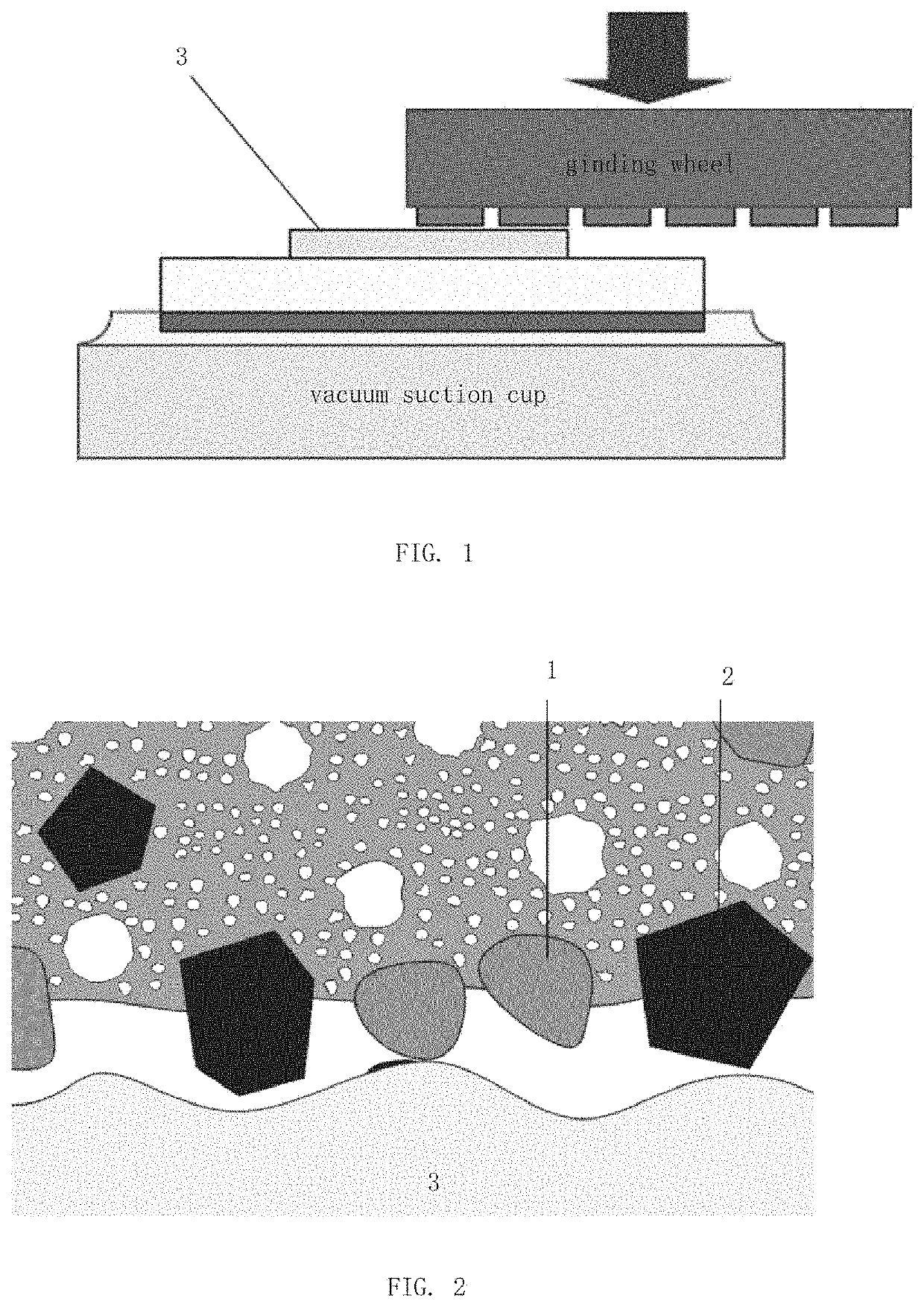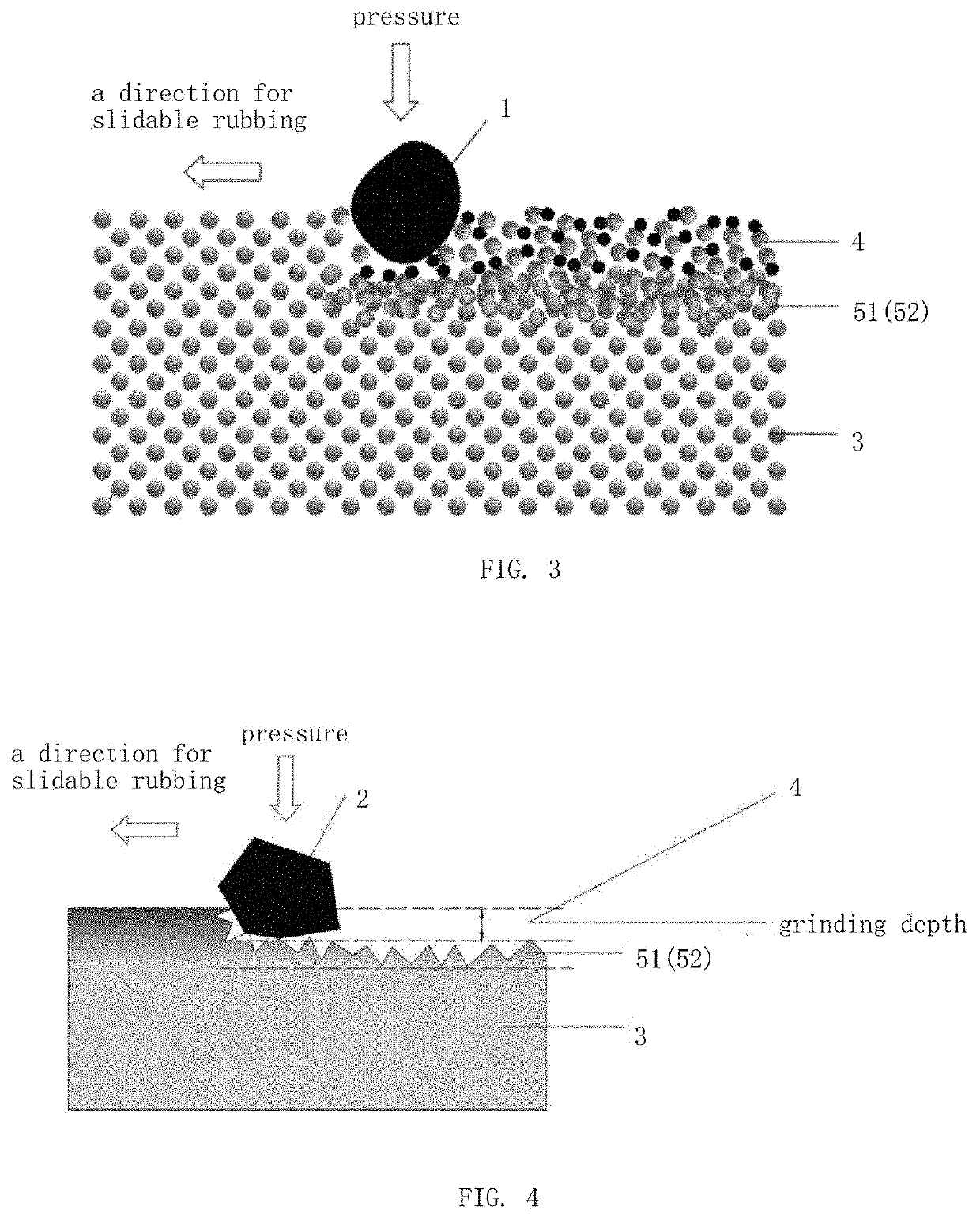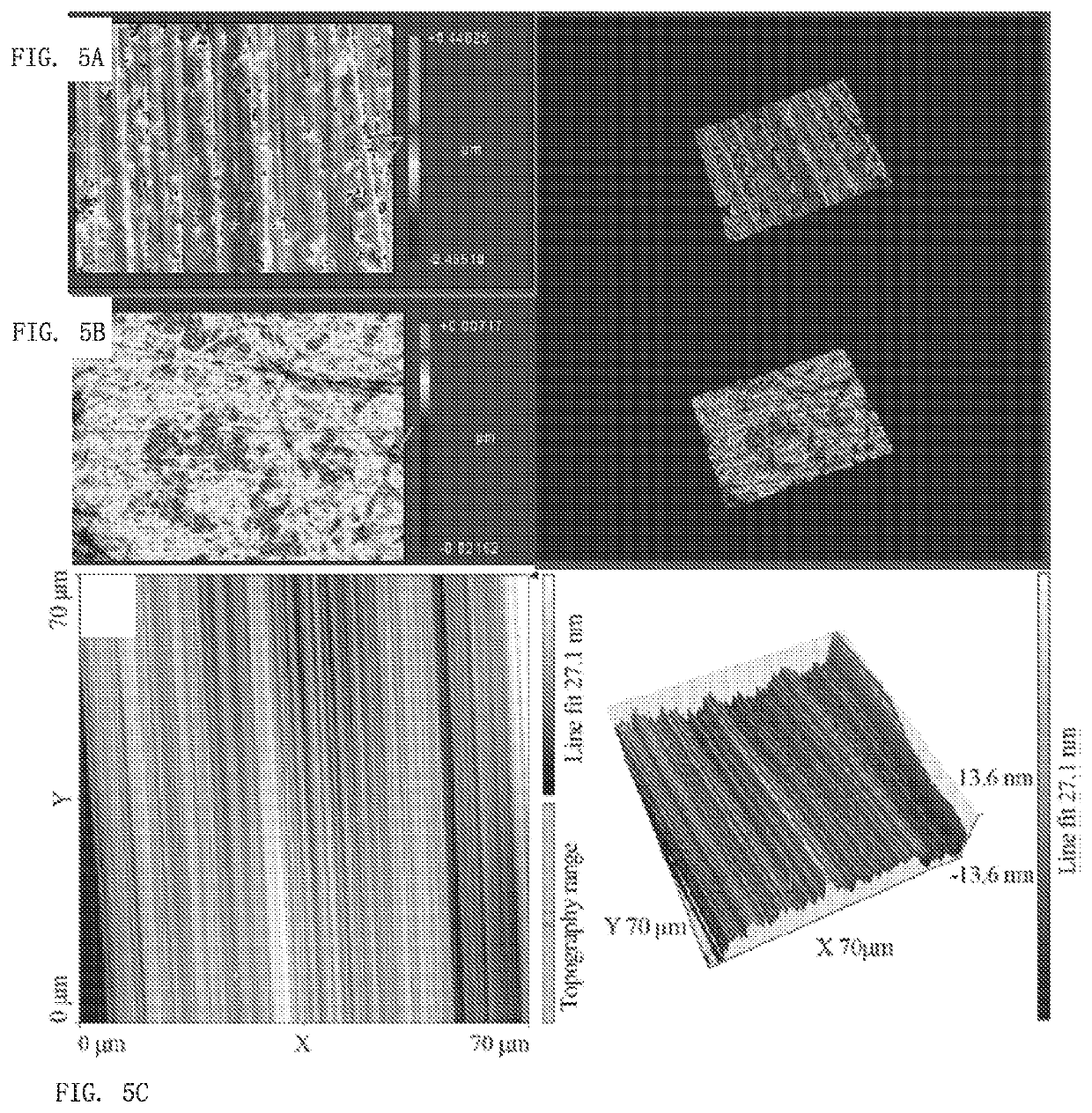Method for grinding single-crystal diamond
a single crystal diamond and grinding method technology, applied in the field of ultraprecision grinding, can solve the problems of low efficiency of pure mechanical removal, large process difficulty, and high hardness of single crystal diamonds
- Summary
- Abstract
- Description
- Claims
- Application Information
AI Technical Summary
Benefits of technology
Problems solved by technology
Method used
Image
Examples
embodiment 1
[0035](1) A base material is copper powder with a particle size (e.g., an average particle size) of 50 μm and a density of 8.92 g / cm3. An active abrasive 1 is iron powder with a particle size (e.g., an average particle size) of 40 μm, and a hard abrasive 2 is alumina with a particle size of 40 μm. A mass ratio of the active abrasive 1 and the hard abrasive 2 is 1:2, and a mass ratio of the base material and a sum of the hard abrasive 2 and the active abrasive 1 is 1:2. The base material, the hard abrasive 2, and the active abrasive 1 are mixed to obtain a first material.
[0036](2) The first material obtained in step (1) is mixed with starch and alumina hollow spheres and sieved. Dextrin solution is then added, mixed, and sieved to obtain a second material. Final concentrations of the starch and the dextrin solution after additions are all 5 wt %, a final concentration of the alumina hollow spheres is 30 wt %, and a size (e.g., an average size) of the alumina hollow spheres is 40 μm.
[...
embodiment 2
[0040](1) A base material is ceramic powder with a particle size (e.g., an average particle size) of 1 μm and a density of 2.6 g / cm3. An active abrasive 1 is iron powder with a particle size (e.g., an average particle size) of 10 μm, and a hard abrasive 2 is alumina with a particle size of 10 μm. A mass ratio of the active abrasive 1 and the hard abrasive 2 is 1:2, and a mass ratio of the base material and a sum of the hard abrasive 2 and the active abrasive 1 is 1:2. The base material, the hard abrasive 2, and the active abrasive 1 are mixed to obtain a first material.
[0041](2) The first material obtained in step (1) is mixed with starch and alumina hollow spheres and sieved. Dextrin solution is then added, mixed, and sieved to obtain a second material. Final concentrations of the starch and the dextrin solution after additions are all 5 wt %, and a final concentration of the alumina hollow spheres is 30 wt %.
[0042](3) Next, the second material obtained in step (2) is molded by col...
PUM
| Property | Measurement | Unit |
|---|---|---|
| mass ratio | aaaaa | aaaaa |
| temperature | aaaaa | aaaaa |
| temperature | aaaaa | aaaaa |
Abstract
Description
Claims
Application Information
 Login to View More
Login to View More - R&D
- Intellectual Property
- Life Sciences
- Materials
- Tech Scout
- Unparalleled Data Quality
- Higher Quality Content
- 60% Fewer Hallucinations
Browse by: Latest US Patents, China's latest patents, Technical Efficacy Thesaurus, Application Domain, Technology Topic, Popular Technical Reports.
© 2025 PatSnap. All rights reserved.Legal|Privacy policy|Modern Slavery Act Transparency Statement|Sitemap|About US| Contact US: help@patsnap.com



